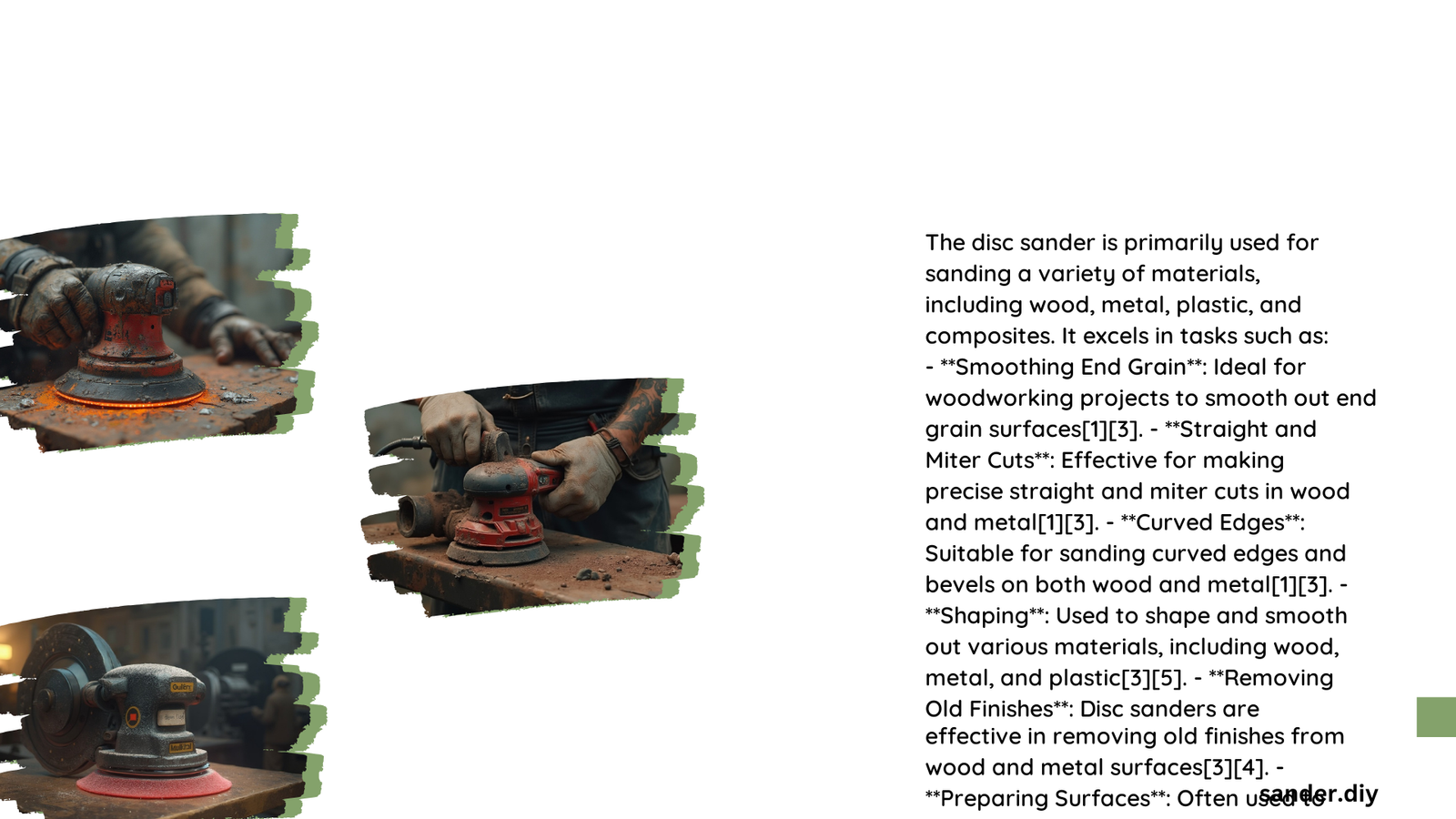A disc sander is a powerful precision tool designed for smoothing, shaping, and finishing surfaces across multiple industries. By utilizing rotating abrasive discs with varying grit levels, these versatile machines enable professionals and hobbyists to transform rough materials into smooth, refined surfaces with exceptional accuracy and efficiency.
What Makes Disc Sanders Essential for Surface Preparation?
Disc sanders represent a critical tool in surface preparation, offering unparalleled precision and control across diverse applications. Their rotating abrasive surface allows users to quickly remove material, smooth rough edges, and prepare surfaces for further finishing.
Key Advantages of Disc Sanders
| Advantage | Description | Impact |
|---|---|---|
| Material Removal | Rapid material elimination | Reduces manual labor time |
| Surface Smoothing | Creates uniform surfaces | Improves final product quality |
| Versatility | Works on multiple materials | Increases tool utility |
How Do Different Grit Types Affect Sanding Performance?

Coarse Grit Applications (24-60)
- Primary Uses:
- Stripping old paint
- Removing rust
- Initial surface preparation
- Heavy material removal
Medium Grit Performance (80-120)
- Ideal Scenarios:
- Smoothing rough surfaces
- Eliminating minor imperfections
- Preparing surfaces for finishing
Fine Grit Precision (150-240)
- Specialized Tasks:
- Final surface preparation
- Scuff-sanding between finish coats
- Creating ultra-smooth surfaces
What Techniques Maximize Disc Sander Effectiveness?
Optimal Sanding Strategies
- Maintain consistent feed rates
- Apply moderate, even pressure
- Use appropriate angle of approach
- Monitor surface temperature
- Clean sanding disc regularly
Where Are Disc Sanders Most Commonly Used?
Industry-Specific Applications
Woodworking
- Smoothing large surface areas
- Preparing wood for staining
- Refining wood joints
- Removing old finishes
Metalworking
- Rust and paint removal
- Surface polishing
- Preparing metals for welding
- Creating smooth metal surfaces
Automotive
- Body panel preparation
- Paint removal
- Surface smoothing
- Polishing metal and plastic components
What Maintenance Practices Extend Disc Sander Lifespan?
Essential Maintenance Checklist
- Regular disc inspection
- Proper cleaning procedures
- Timely disc replacement
- Appropriate storage
- Lubrication of moving parts
Expert Recommendations for Optimal Performance
Sanding Best Practices
- Select correct grit for specific task
- Use appropriate protective equipment
- Maintain consistent sanding technique
- Work in well-ventilated area
- Follow manufacturer’s guidelines
Conclusion
Disc sanders represent a sophisticated tool enabling precise surface preparation across multiple industries. By understanding grit selection, technique, and maintenance, users can maximize their sanding efficiency and achieve professional-quality results.
Pro Tips
- Always start with coarser grits and progress to finer ones
- Test sanding technique on scrap material first
- Invest in high-quality sanding discs
Reference:
– Sandpaper Grit Chart
– Grit Types and Uses
– Empire Abrasives Grit Guide
